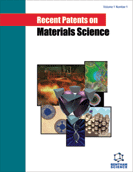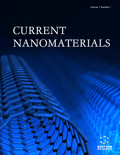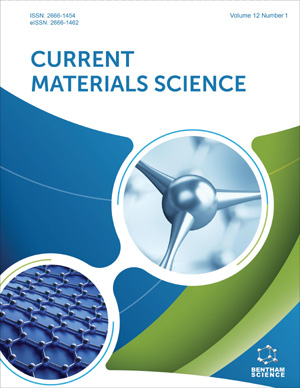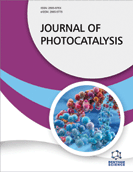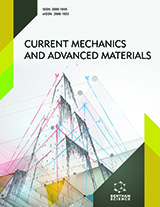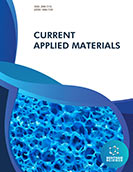Abstract
This manuscript presents our patent for a more effective magnetocaloric material based on Gd5Si2Ge2 as well as its method of production. The material has high refrigeration capacities and, with modifications to its composition, it is possible to control the temperature at which its magnetocaloric effect is the largest. This effect was achieved by modifying the stoichiometry of the starting composition. First, the Si or Ge is replaced with Fe in the starting composition; then, there is an additional heat treatment and quenching of the alloy. This produces a novel microstructure and a magnetocaloric material with an enhanced refrigeration capacity. Although the magnetocaloric effect is slightly reduced as a result of this process, the iron indirectly affects the microstructure and thereby reduces the hysteresis losses that occur during the first-order structural transformation. Hysteresis losses, of course, have a very detrimental effect on the refrigeration capacity. We observe that even a small amount of iron increases the refrigeration capacity up to 12%. Furthermore, by changing the amount of iron, we can alter the temperature at which the magnetocaloric effect is the largest. This then increases the temperature range over which this material can be applied. The patent covers the process for improving the usefulness of magnetocaloric Gd5Si2Ge2-based alloys as a working material for a magnetocaloricbased refrigerator. These refrigerators are energetically more efficient and environmentally less harmful than regular compressor-based refrigerators.
Keywords: Complex metallic alloys, crystal structure, hysteresis losses, intermetallic alloys, magnetic refrigeration, microstructure, refrigeration capacity, thermomagnetic properties.
Recent Patents on Materials Science
Title:Complex Metallic Alloys for Applications in Magnetic Refrigeration
Volume: 8 Issue: 2
Author(s): Benjamin Podmiljsak, Paul J. McGuiness and Spomenka Kobe
Affiliation:
Keywords: Complex metallic alloys, crystal structure, hysteresis losses, intermetallic alloys, magnetic refrigeration, microstructure, refrigeration capacity, thermomagnetic properties.
Abstract: This manuscript presents our patent for a more effective magnetocaloric material based on Gd5Si2Ge2 as well as its method of production. The material has high refrigeration capacities and, with modifications to its composition, it is possible to control the temperature at which its magnetocaloric effect is the largest. This effect was achieved by modifying the stoichiometry of the starting composition. First, the Si or Ge is replaced with Fe in the starting composition; then, there is an additional heat treatment and quenching of the alloy. This produces a novel microstructure and a magnetocaloric material with an enhanced refrigeration capacity. Although the magnetocaloric effect is slightly reduced as a result of this process, the iron indirectly affects the microstructure and thereby reduces the hysteresis losses that occur during the first-order structural transformation. Hysteresis losses, of course, have a very detrimental effect on the refrigeration capacity. We observe that even a small amount of iron increases the refrigeration capacity up to 12%. Furthermore, by changing the amount of iron, we can alter the temperature at which the magnetocaloric effect is the largest. This then increases the temperature range over which this material can be applied. The patent covers the process for improving the usefulness of magnetocaloric Gd5Si2Ge2-based alloys as a working material for a magnetocaloricbased refrigerator. These refrigerators are energetically more efficient and environmentally less harmful than regular compressor-based refrigerators.
Export Options
About this article
Cite this article as:
Podmiljsak Benjamin, J. McGuiness Paul and Kobe Spomenka, Complex Metallic Alloys for Applications in Magnetic Refrigeration, Recent Patents on Materials Science 2015; 8 (2) . https://dx.doi.org/10.2174/1874464808666150427223327
| DOI https://dx.doi.org/10.2174/1874464808666150427223327 |
Print ISSN 1874-4648 |
| Publisher Name Bentham Science Publisher |
Online ISSN 1874-4656 |
 14
14 2
2Related Articles
-
Bipolar Affective Disorder in Young People: A Review
Adolescent Psychiatry Modeling Rett Syndrome Using Human Induced Pluripotent Stem Cells
CNS & Neurological Disorders - Drug Targets Intestinal Barrier Dysfunction in Human Pathology and Aging
Current Pharmaceutical Design The Role of Vasopressin in Affective Disorders: Possible Targets of Intervention
Central Nervous System Agents in Medicinal Chemistry Sweet on Hedgehogs: Regulatory Roles of Heparan Sulfate Proteoglycans in Hedgehog-Dependent Cell Proliferation and Differentiation
Current Protein & Peptide Science Comparison of the Effects of Contralaterally Controlled Functional Electrical Stimulation and Neuromuscular Electrical Stimulation on Upper Extremity Functions in Patients with Stroke
CNS & Neurological Disorders - Drug Targets Computational Modeling of Dielectrophoretic Microfluidic Channel for Simultaneous Separation of Red Blood Cells and Platelets
Current Signal Transduction Therapy Pharmacological Findings Contribute to the Understanding of the Main Physiological Mechanisms of Memory Retrieval
Current Drug Targets - CNS & Neurological Disorders Transient Opening of the Blood-Brain Barrier by Vasoactive Peptides to Increase CNS Drug Delivery: Reality Versus Wishful Thinking?
Current Neuropharmacology A Healthy Gut for a Healthy Brain: Preclinical, Clinical and Regulatory Aspects
Current Neuropharmacology Editorial: Thinking About Thinking, the Self, and the Adolescent’s Search for Meaning
Adolescent Psychiatry Cellular Mechanisms of Striatum-Dependent Behavioral Plasticity and Drug Addiction
Current Molecular Medicine Peptide Self-Assemblies for Drug Delivery
Current Topics in Medicinal Chemistry Neuroinflammation as a Common Mechanism Associated with the Modifiable Risk Factors for Alzheimer’s and Parkinson’s Diseases
Current Aging Science Nanowired Drug Delivery of Antioxidant Compound H-290/51 Enhances Neuroprotection in Hyperthermia-Induced Neurotoxicity
CNS & Neurological Disorders - Drug Targets Parietal Lobe Dysfunction in Schizophrenia: A Review
Current Psychiatry Reviews Vitamin D : Autoimmunity and Gender
Current Medicinal Chemistry Clinical, Psychosocial and Family Characteristics of Suicide Attempts Among Greek Adolescents
Adolescent Psychiatry Patient-Specific Induced Pluripotent Stem Cell Models in Mitochondrial Diseases
Current Stem Cell Research & Therapy Protein-Protein and Peptide-Protein Interactions of NudE-Like 1 (Ndel1): A Protein Involved in Schizophrenia
Current Protein & Peptide Science


